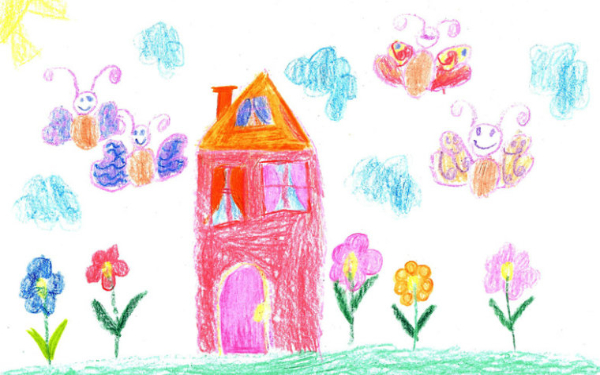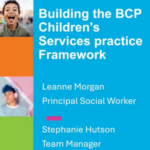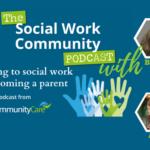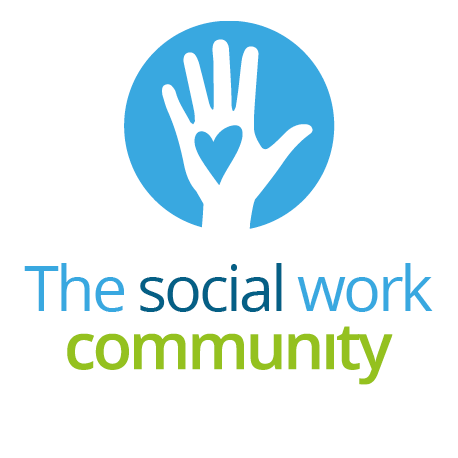

This article presents a few key considerations from Community Care Inform Children’s guide on conducting confident direct work with children and young people. The full guide provides practice guidance on conducting direct work exercises, including examples of tools, resources to take, how to set the tone and how to engage with the family. Inform Children subscribers can access the full guide here.
This guide was written by Yvonne Shemmings, a child protection trainer and previously a local authority social worker, team leader and manager.
Generally, direct work can include:
- Exploring children’s memories of events.
- Helping children to process traumatic experiences.
- Undertaking life story work.
- Helping with social aspects of the child’s life.
Building a trusting relationship
Direct work with children and young people requires, along with materials and techniques to help them talk, specific social work skills that include:
- active listening;
- sensitivity;
- a ‘mentalised’ approach (the ability to understand we all have minds that contain intentions, thoughts and feelings that are different from others’).
Recognising the hard emotional work that a child will do in direct work sessions and taking steps to create a nurturing environment can be invaluable, and it is always worth asking those who are caring for the child what drinks and snacks he or she can have whilst in the room with you.
The main thing that children say is helpful in allowing adults to work with them is the quality of that adult’s capacity to listen actively to them and to hear the things they are not saying.
Equally important is that when adults tell the child that something will happen, it does. So, be mindful of the language you use as anything that sounds like a promise is just that to the child. Reliable, confident, kindly and attentive adults, who appear genuinely interested, are singled out as special people.
Setting the tone
A general principle of direct work is that it should create the conditions for the child to speak. This requires the social worker to be an active listener, not a busy ‘doer’.
The purpose of direct work is to provide secure conditions for the child or, to use Bion’s term, ‘containment’, so that the child can feel safe to express their feelings. It consists of quiet, sensitive observation, with the aim of occasionally lubricating the process.
Reactions to the child should be congruent with what they are saying and doing, including your tone of voice. Although it is sometimes appropriate to be bright and cheerful, you do not want to give the impression that every session will be fun, and sensitivity and good observations skills are important.
You should seek meaning in what the child is expressing – both verbally and non-verbally. This requires self-awareness so that the social worker can distinguish their own feelings from those of the child.
What to take to direct work sessions
You may not know much about a child before a visit other than basic details such as name and age. Also, it could be that only one visit will be undertaken.
Social workers need to know not only what has happened, but also its meaning for the child. They need to be able to enter the child’s inner world without necessarily having weeks to develop a relationship. Therefore, a general selection of toys and materials should be available for all visits. Consider bringing:
- a few (washable) felt-tip/coloured pencils;
- a small soft doll;
- a few toy animals;
- a few small cars;
- some paper.
Other ideas of activities to bring include:
- puppets;
- buttons;
- play people in family groups;
- farm animals;
- musical instruments;
- Play-Doh.
Many practitioners have books that they use for children in particular circumstances. Teams should be encouraged to share what they use and how they do so, perhaps building up a team resource bank.
Whilst there is a ‘right’ way to engage children, active listening being the most important attribute, there is no ‘right’ number of toys or games to have on hand. Practitioners make choices as to what they offer and how they offer it.
It is always important, though, to reflect on your practice and see if it is giving you the best results you would expect. Watching a colleague at work with a child, team-based discussions on working methods and your own reading can refresh you and challenge you to work differently.
Some practitioners can engage the child using simple materials such as papers and pens, using their own experiences to draw out information. However, most children will engage more readily if provided with an activity as an introduction to the work and, for some, it is important that you do the task too.
Sitting beside, rather than face to face, with a child allows dialogue to develop and a sense of sharing.
The work you do with children may help them to understand themselves better; this is particularly true when practitioners use tools such as ecomaps and genograms.
Picking a location for direct work
Direct work should be carried out somewhere quiet, where the child feels safe, where you are not going to be interrupted and where the child knows how to get to the toilet. Children engaged in potentially stressful situations often need to go to the toilet at regular intervals, as a way of regulating their emotions as well as due to the physical desire to urinate.
In complex family situations, practitioners may want to see and meet the child in a neutral space, and some social workers plan with parents or carers to see the child at their school.
Although this has the advantage of being an environment free of family or parental influence, it brings the home situation into the school for the child which may be distressing for them. Perhaps a better neutral space for some children is a children’s centre, Cafcass office or other office space.
Using observation
Simply observing a child during free play is a good way of gaining insight into their usual ways of playing and interaction with other children and their toys. Using direct work in addition allows practitioners to gain a great understanding of a child’s lived experiences.
It is important to remember that children up to four years of age tend to think in egocentric and concrete ways, and care should be taken when interpreting their behaviours. You should seek advice when considering what their behaviour might mean and avoid making assumptions about what children can understand.
McLeod (2008) states that even pre-school children can have a mature understanding of an abstract concept, such as death, if it is relevant to their experience and when they have had it sensitively explained to them.
Developmental capacity
With older children, direct work may focus on mediation between them and their parents or carers. As with younger children, bear in mind they are conscious of non-verbal signs such as posture, tone of voice, gesture and facial expression.
Direct work with older children can include a focus on:
- their relationships;
- bullying;
- sexual identity;
- family disharmony;
- confidence;
- making and keeping friends,
- their life story.
Many unaccompanied asylum-seeking children may have experienced trauma in their country of origin and need help processing this. They may also need support managing feelings of loss or in establishing their identity in a new country without the support of their loved ones.
Practise using the activities beforehand and attempt to predict any questions that may arise. It will be important to think about what ‘expressing their view’ might mean to the child.
Cultural norms should be considered; for example, different cultures have proximity comfort zones and social norms about direct eye contact and hand gestures. Some cultures find it unacceptable to sit on the floor, and some may find it unacceptable for a child to name their parents.
In addition, adults from some cultures do not get involved in their children’s play, which could result in the child finding the social worker’s interest in completing direct work activities puzzling or uncomfortable.
Practice point
For those working with disabled children and children with mental health problems, see Community Care Inform’s direct social work with disabled children: case study examples.
If you have a Community Care Inform Children licence, log on to access the full guide and learn more about conducing confident direct work with children and young people.
What to read next
- Directory of direct work tools to use with children and young people
- Introduction to direct work with children and young people: a quick guide
- Writing up direct work for case records and court reports
References
Bion, W, R (2023)
Learning from experience
McLeod, A (2008)
Listening to Children: a practitioners guide






 Bournemouth, Christchurch and Poole
Bournemouth, Christchurch and Poole  Hampshire County Council
Hampshire County Council  Oxfordshire County Council
Oxfordshire County Council  South Gloucestershire Council
South Gloucestershire Council  Wokingham Borough Council
Wokingham Borough Council  Webinar: building a practice framework with the influence of practitioner voice
Webinar: building a practice framework with the influence of practitioner voice  ‘They don’t have to retell their story’: building long-lasting relationships with children and young people
‘They don’t have to retell their story’: building long-lasting relationships with children and young people  Podcast: returning to social work after becoming a first-time parent
Podcast: returning to social work after becoming a first-time parent  How managers are inspiring social workers to progress in their careers
How managers are inspiring social workers to progress in their careers  Workforce Insights – showcasing a selection of the sector’s top recruiters
Workforce Insights – showcasing a selection of the sector’s top recruiters 

 Facebook
Facebook X
X LinkedIn
LinkedIn Instagram
Instagram
This assumes Social Workers are allowed the time to undertake direct work when management have more pressing bureaucratic matters that they want Social Workers to address
Direct work supports decision making.It gives insight into the child’s lived experience.It allows the courts insight into the child’s indiviaul identity,lived experiences from their point of view ( brings the child to life has a person)
In some case’s allows the child,more so young person to express their feelings from their point of view and in their own words.Direct work can also bring with it many forms of emotions after all we are touching on emotions which the child may have hidden or does not understand.My point is this work is IMPORTANT needs focus from the social worker.Rushing out of the office stressed with paper and crayons does not support good pratice, visiting the child one /two times does not support good pratice.A child/ young person has to build trust.
Commication-How we communicate has a lasting impact on children what we say and how we interact is important.Finding the right environment may take several sessions.The work takes planning listening carefully and focus.
If social workers are not given time and resources or you are being called back to the office to deal with issue’s on your case load does not demonstrate the importance of the work.The work is fundamental to connecting with the child
What I find difficult and is in plain sight!!
Social workers train to safeguard vulnerable children which involves building connections in order to make safe meaningful recommendations,safe tried and tested plan’s to support the child’s indiviaul needs.
Social workers do not hold financial responsibility/budgets yet are held responsible/accountable when procedures resources are not implemented (for example appropriate placements /safe environments) yet it is the social worker who faces cross- examination in court.
I have yet too witness any senior managers attend court to explain why social workers do not have realistic support ,guidance or why appropriate resources have not been implemented.Managers are aware they cannot use funding as a reason because this has wider implications for those in senior position’s and political implications.
Therefore it is the norm to blame social workers to mask wider issues which impacts the quality of service,staff retention ,safeguarding of vulnerable children and eroson of the profession from all levels.Social workers are not all to blame unless proven other wise.Most Social workers want to deliver a professional service.It is worrying to observe the profession being slowly eroded.
Social work involves carrying out diffrent types of assessments to inform decision making.Direct work being one of them.The work also involves being aware of non verbal clues both with the younger child and young person all of which are important,not only helps support the child talk about their lives,how they are feeling some of which may be anger or indifference at this stage.
There are work sheets to support the older child with direct work,however this may not be a preferred option for the young person therefore speaking with and planning with the young person what would help them can support the young person in expressing their feelings giving better insight into the young person’s lived experiences and may be Informative for the court process.
My point is the work is necessary,should take time,should involve planning to understand the child’s cultural needs,what may be viewed as normal behaviour/expectation for the child may not infact be they may have learnt to accept their circumstances.
The childs age,the childs learning capacity for example (the child with autism who may be high functioning or the child who may not be)what works for one child may not work for all.Speaking with the child about what would be helpful for them takes time and is not a tick box exercise.
Children are human beings who may be traumatised, who may want to talk about their lives or who may not be ready to do so.They may have suppressed their feelings and or view their lives as normal when it is not.
My point is the work is an important process.Is it not?